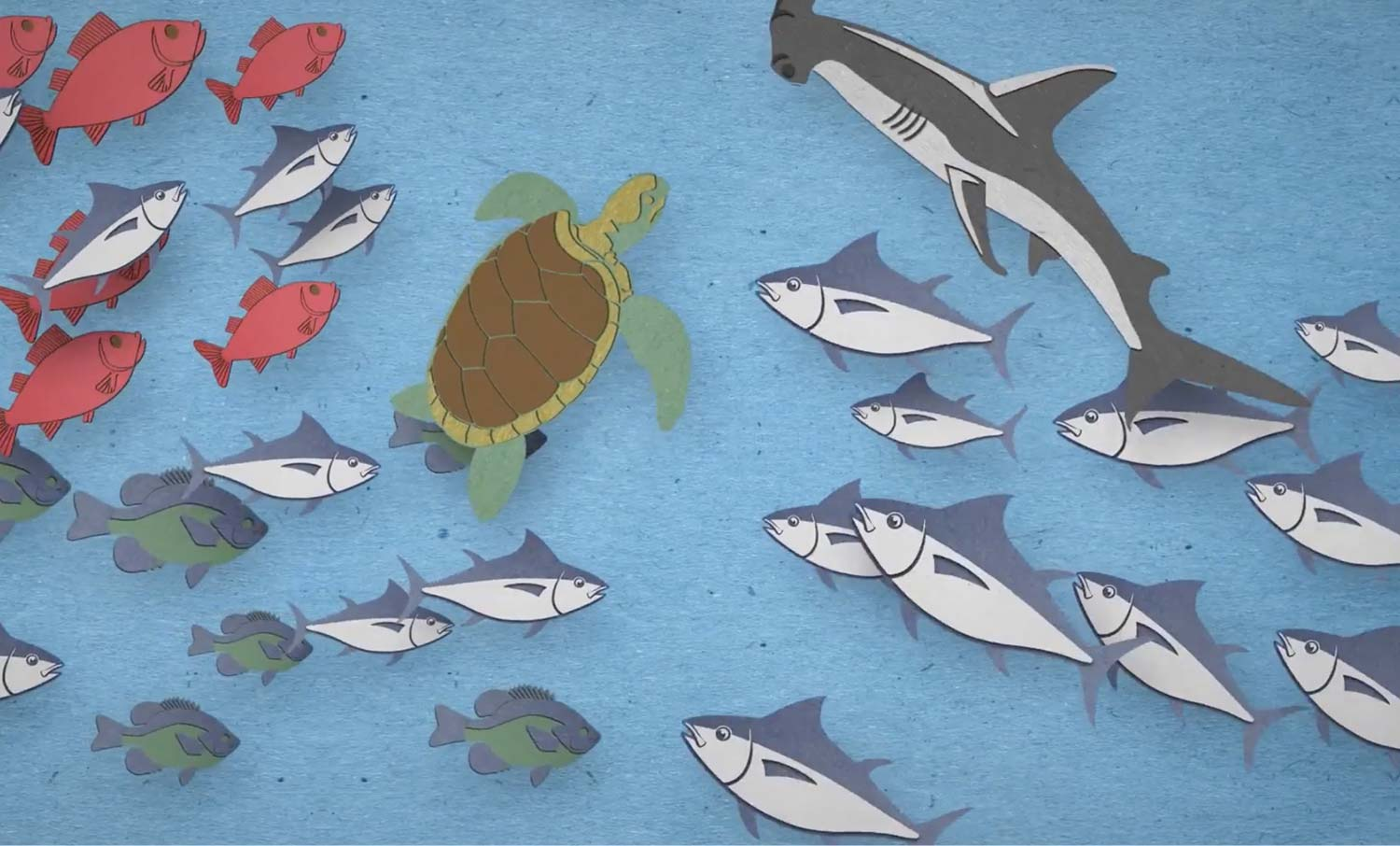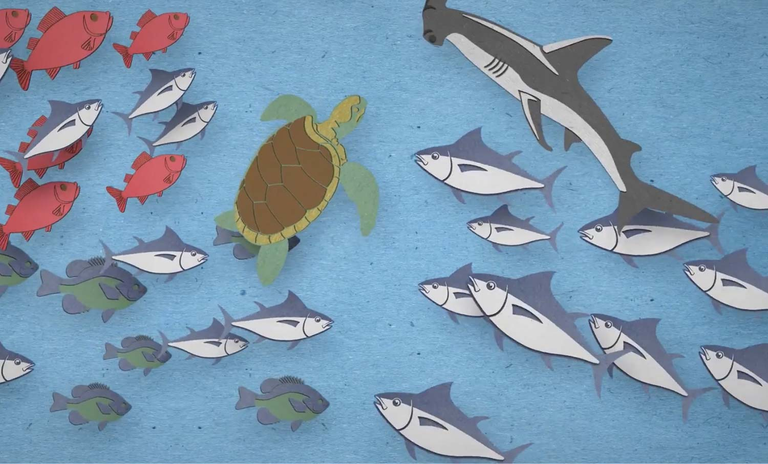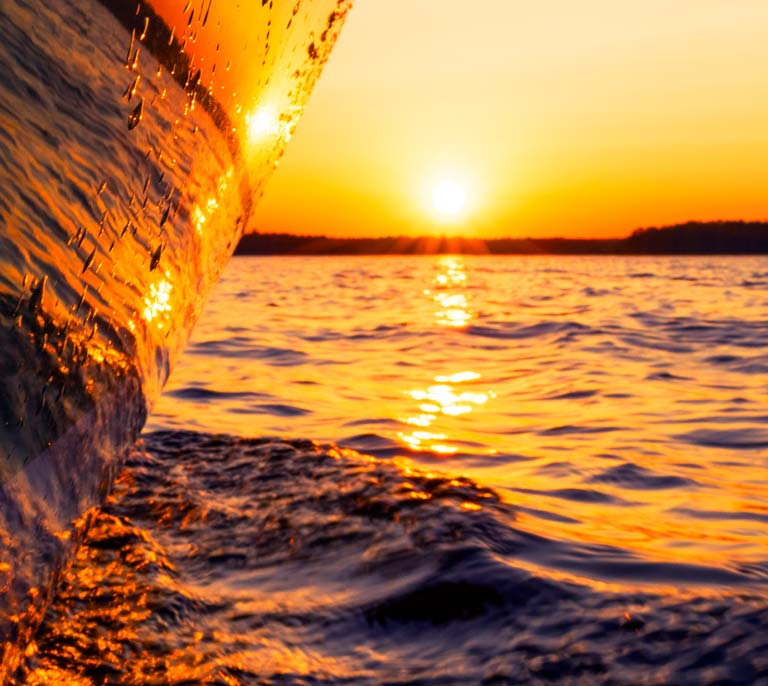
Sustainable Fishing
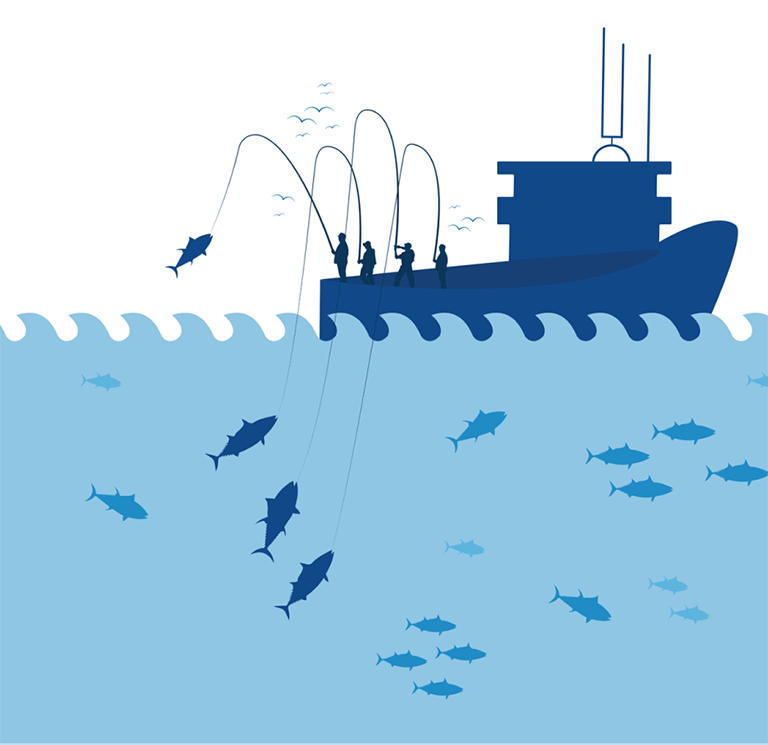
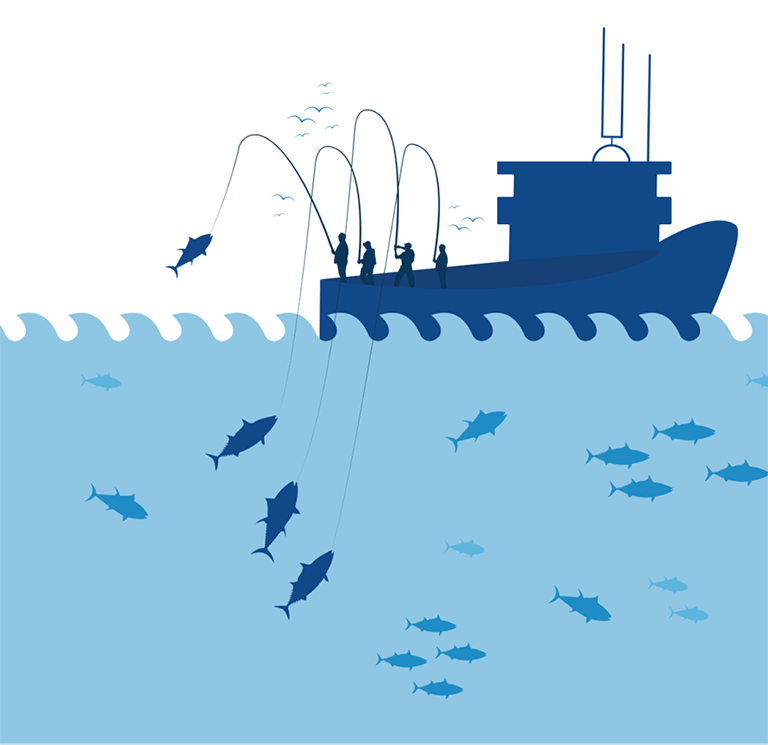
Best
Practice
Pole & Line
Practiced for centuries, pole & line fishing catches tuna from a bait boat. Live sardines and anchovies are thrown overboard attracting schools of tuna creating a feeding frenzy. Using a pole & line, fishermen catch and haul younger, migratory tuna onto the boat one-by-one.
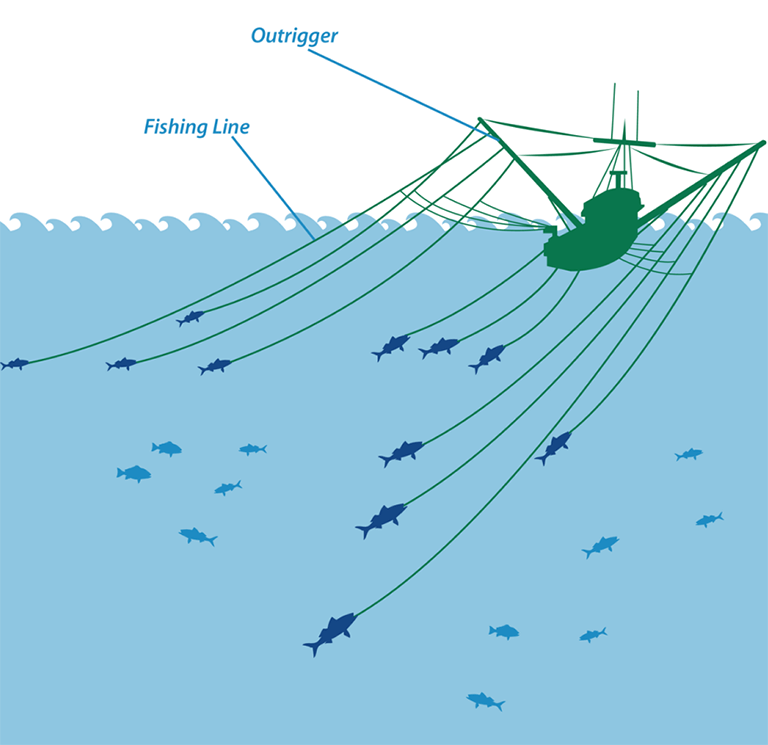
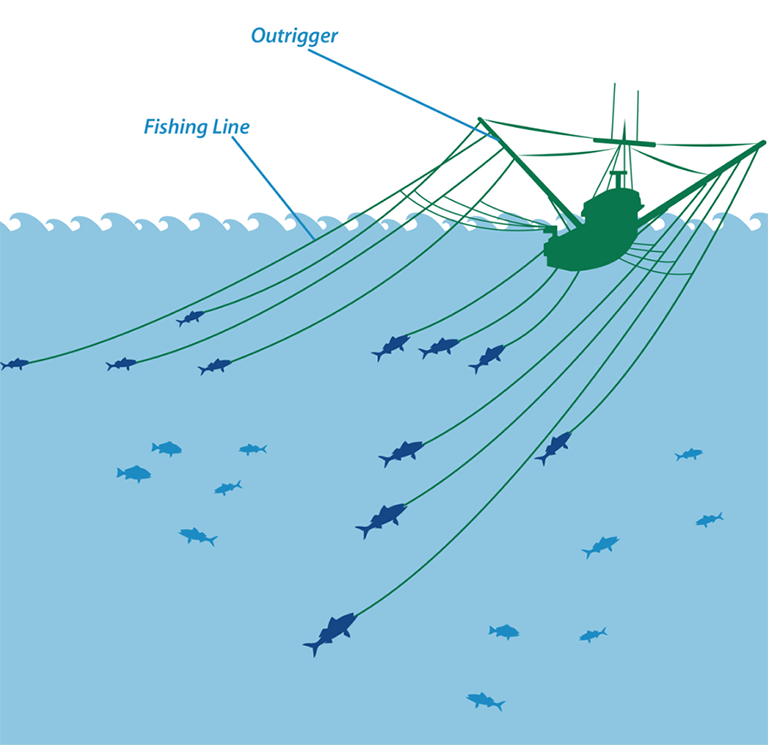
Best
Practice
Trolling
This sustainable fishing method involves towing artificial lures (also known as jigs) behind a slow-moving boat. When fishing for tuna, vessels rig their boats with approximately 10 to 20 fishing lines. Each is attached with a barbless jig that appeals to the targeted species: swimming albacore.
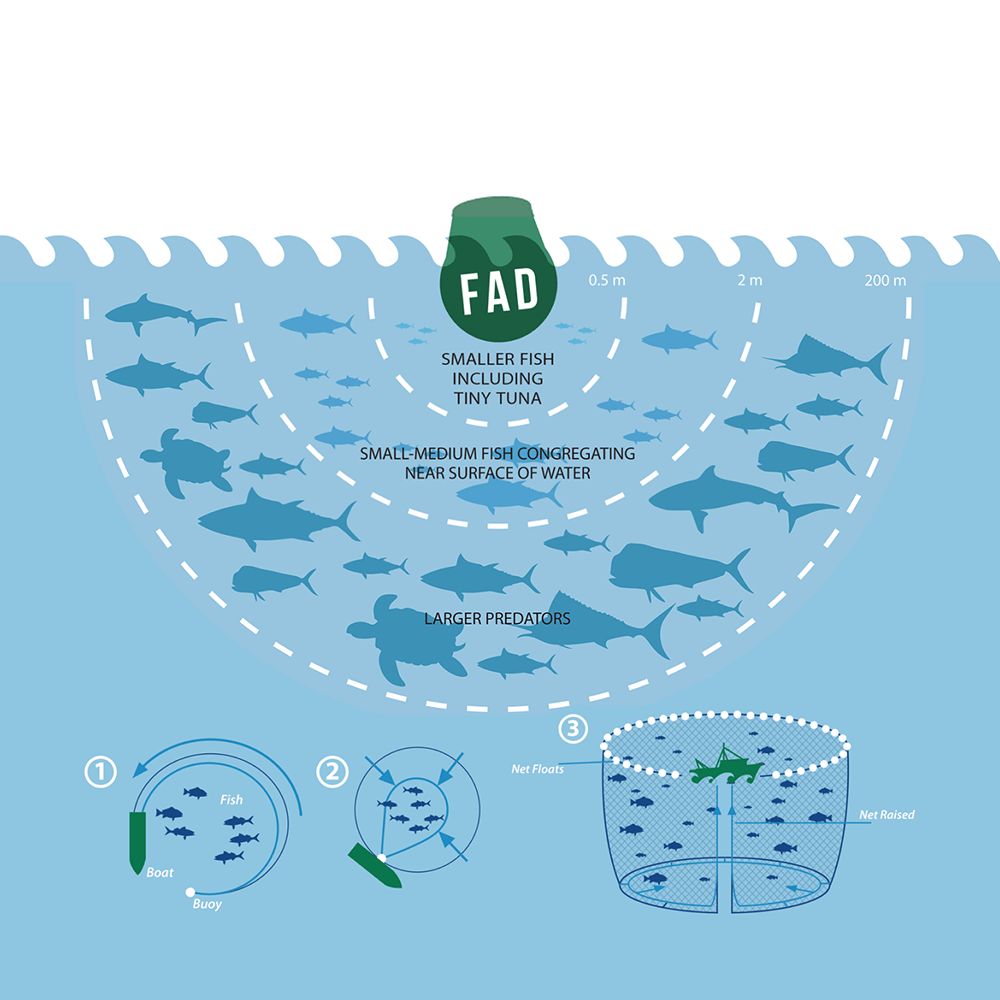
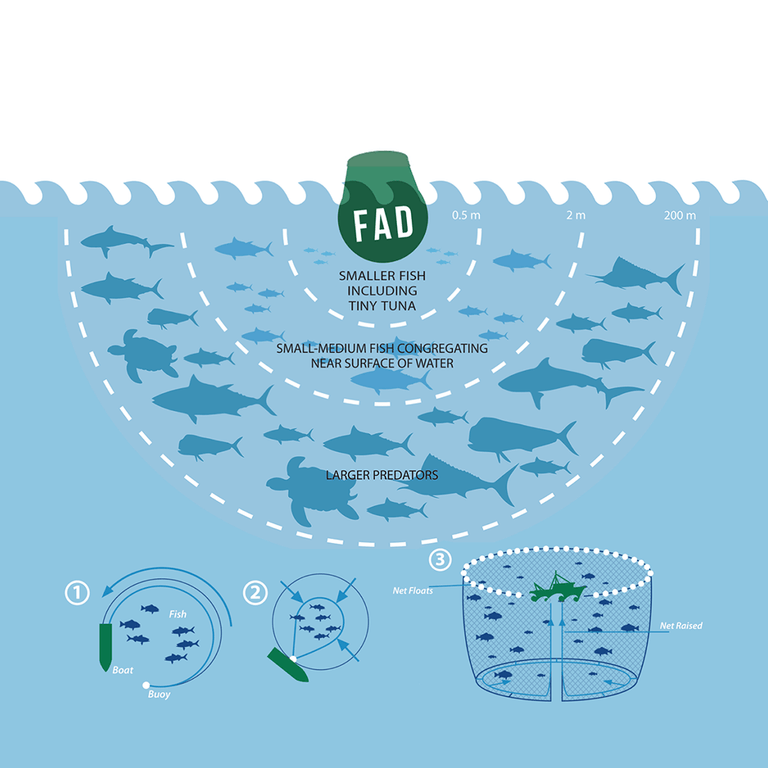
Wasteful
Practice
Purse Seines with the use of FADs
FADs (Fish Aggregating Devices) are radio-beaconed floating devices that attract all types of fish beyond a targeted species. Small fish and tiny tuna aggregate to the cover of the FAD. These smaller fish then attract larger fish, which lures in even more species like sharks and turtles. These are caught along with the tuna and many are discarded. Catching tiny juvenile tuna results in lost food supply, while bycatch mortality disrupts the ocean’s natural balance and threatens local communities’ food security.
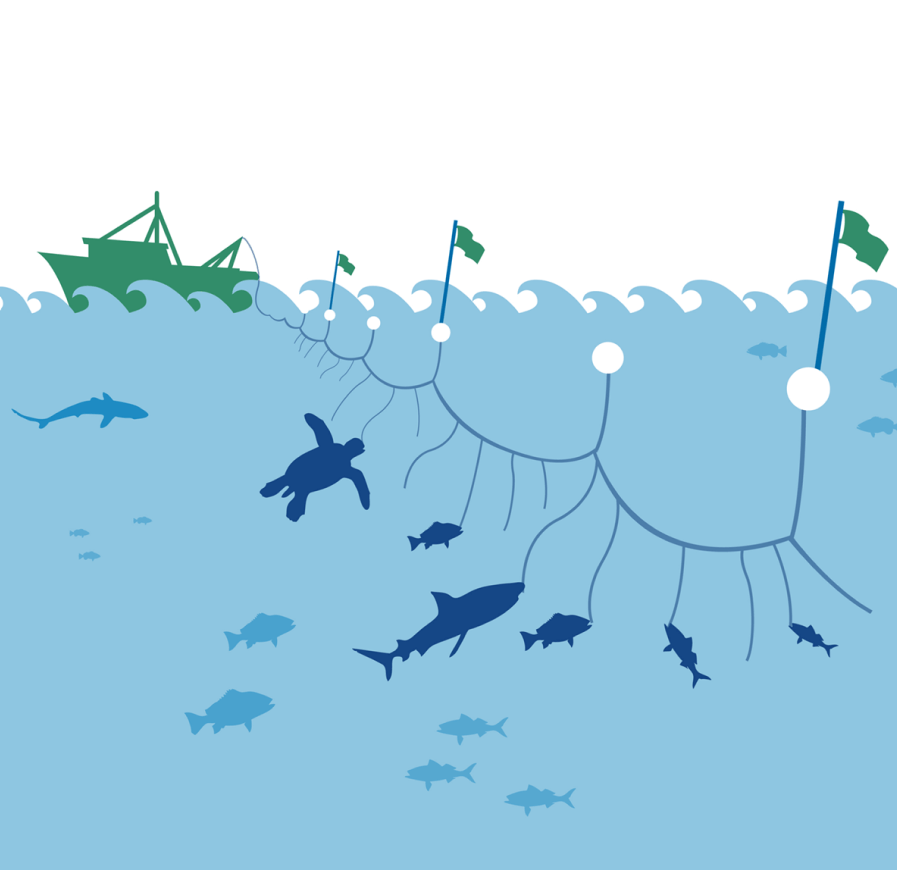
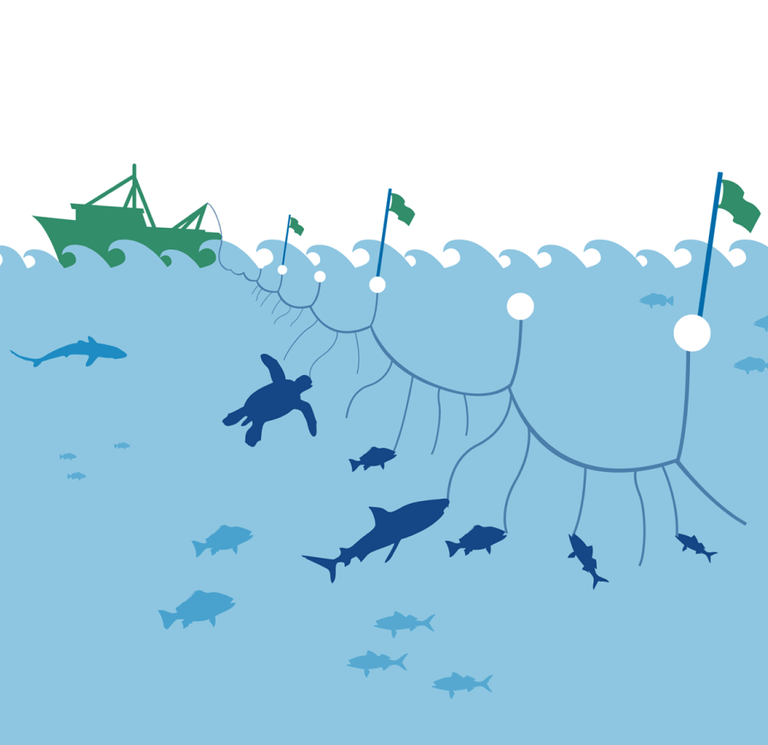
Wasteful
Practice
Long-Line Fishing
The most common method used to catch albacore worldwide, long-line fishing uses long lines that attract a variety of ocean species beyond tuna. Endangered sea turtles, sharks and other fish also bite the bait creating wasteful bycatch mortality and an unbalanced ocean ecosystem.

